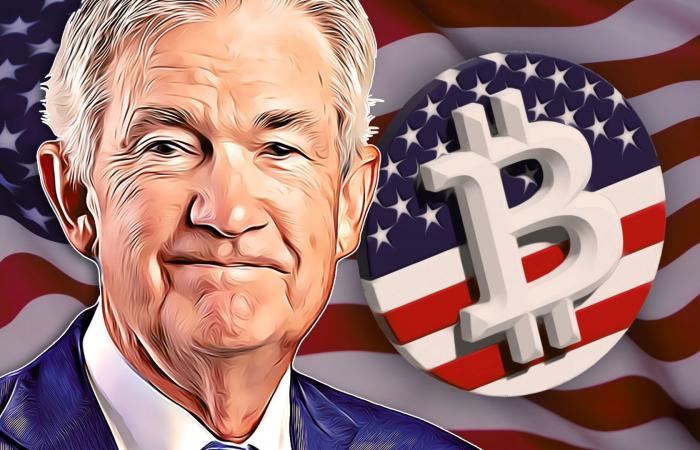The Fed in the sights… Elon Musk never ceases to surprise: this time, the tech billionaire, strengthened by Donald Trump’s victory in the US presidential election, is reviving an old quarrel around the American Federal Reserve. After reposting an incendiary message from Utah Senator Mike Lee, who calls nothing more and nothing less for the end of the Fed, Musk is throwing a wrench into the pond. This debate, which has been brewing for decades, questions the role of central banks and rallies a growing number of supporters of Bitcoin, an alternative that some already see as an anti-inflation response. So, what does this position reveal? Simple provocation or vision for a post-dollar future?
- Elon Musk has reignited the debate on the Federal Reserve by supporting a call for its dissolution, calling into question its independence.
- Growing distrust of the US dollar has increased the appeal of Bitcoin, seen by some as an anti-inflation alternative.
Elon Musk and Mike Lee: a call to “end” the Federal Reserve
The debate around the role andinfluence of the American Federal Reserve (Fed) takes a new turn since Elon Musk reposted an inflammatory tweet from Utah Senator Mike Lee. In this message, Lee calls for increased executive control over the Fed and questions its independence from the presidency, emphasizing a “drift” in relation to constitutional principles.
The senator notably criticized Jerome Powell, the president of the Fed, who recently affirmed his intention to remain in office even under the administration of Donald Trump, elected president for the 2025 term. Mike Lee denounces this “ deviation from the Constitution » and proposes to put an end to the Fed, sparking a wave of reactions, in particular among supporters of Bitcoin and “sound money” advocates, or defenders of sound money, opposed to inflationary policies.
“The executive branch should be under the direction of the President This is how the Constitution was designed The Federal Reserve is one of many examples of how we have deviated from the Constitution in this regard All the more reason to which we should end the Fed. »
The Decline of the Dollar and the Growing Appeal of Bitcoin
For many observers, Mike Lee’s tweet relayed by Elon Musk reflects a growing distrust of fiat currencies managed by a central bank. Since the creation of the Fed in 1913, the US dollar has lost approximately 96% of its value. A decline attributed by critics to permissive monetary policies and growing inflation caused by excessive monetary creation.
As the United States’ national debt now reaches $35 trillion, some politicians like Jimmy Patronis, Florida’s chief financial officer, are calling for alternative solutions. Patronis proposes in particular to integrate Bitcoin into state pension funds in order to protect the purchasing power of citizens.
For Bitcoin supporters, this cryptocurrency could be an effective hedge against inflation, due to its deflationary nature and limited supply. But then, why are we talking about a decline in the dollar? A little point of history is in order.
In 1913, the United States Federal Reserve (Fed) was created to stabilize the United States financial system. However, a little over a century later, many economists and critics point out that this institution paradoxically contributed to the devaluation of the dollar and the rise in inflation. The transition of the dollar from a gold-linked currency to a “fiat” currency also played a crucial role in this process.
The Fed, the Achilles heel of the dollar?
Before 1913, the United States experienced regular banking crises and serious recessions, notably due to the fragility of their financial system. The Fed was therefore created to stabilize the banks and control the money supply, all with the aim of preventing bank panics, that is to say the rushes of depositors to the counters to withdraw their funds in crisis case.
To do this, the Fed was given two main missions:
- Stabilize prices (control inflation).
- Maintain full employment by adjusting interest rates to encourage or hinder investments.
The pegging of the dollar to gold: 1913-1971
At its creation, the dollar was linked to gold according to a system of standard-or : each bank note could theoretically be exchanged for a quantity of gold.
This convertibility ensured some stability of the currencysince the quantity of dollars in circulation was limited by the country’s gold reserves. This system, in force until the 1970s, limited the possibilities of excessive monetary creation, because each note had to be backed by a corresponding quantity of gold.
The “disconnect” of the dollar and gold in 1971: the Fed is free
In 1971, President Richard Nixon ended the convertibility of the dollar into gold, a key moment in monetary history known as the choc Nixon. Due to growing inflationary pressures and high budget deficits (particularly linked to the costs of the Vietnam War), the United States had not no longer enough gold to cover all the dollars in circulation.
With this decision, the dollar became a fiat currency : its value is no longer guaranteed by a physical resource like gold, but depends on the confidence placed in the issuing government and the monetary policy of the Fed.
The Fed thus won the freedom to adjust the monetary supply according to economic needsbut at the cost of potential inflation.
Why has the dollar lost 96% of its value?
Since the creation of the Fed, the dollar has lost approximately 96% of its initial purchasing power, a devaluation often attributed to several factors:
- Rise in public debt : The United States has regularly financed its public deficits by borrowing and printing money, thus fueling the devaluation of the dollar.
- Inflation continue : By printing more dollars to support the economy (for example, during financial crises and more recently during the pandemic), the Fed increases the supply of money, which reduces the value of each note in circulation. With more dollars for a similar number of goods, prices rise, causing a decline in purchasing power.
- Absence of natural “brake” : By detaching the dollar from gold, the Fed has the freedom to create money without hard limits, which increases the likelihood of overinflation.
The Senate and the “Bitcoin Strategic Reserve Bill”: an anti-inflation initiative to counter the Fed
Furthermore, Elon Musk’s comments and opinions are indirectly supported by others. In July 2024, the Wyoming Senator Cynthia Lummisintroduced the “Bitcoin Strategic Reserve” bill to strengthen Bitcoin’s position as a credible alternative in the face of inflation and loss of purchasing power. This bill, which follows years of accommodative monetary policies, proposes to create a strategic reserve in Bitcoin, which would give the cryptocurrency unprecedented legitimacy on the national level.
This support for Bitcoin is also reflected in the strategy announced by Donald Trump at the Bitcoin 2024 conference in Nashville. The future president even suggested that Bitcoin could be used to pay the national debt. Although this statement was met with skepticism, it illustrates a paradigm shift where Bitcoin is seen, for some, as a viable option in the face of current monetary imbalances.
This call to end the Fed, although it remains largely symbolichighlights a change in mentalities: the emergence of cryptocurrencies could profoundly transform traditional financial systems. So, should we take this “Bitcoin revolution” seriously? In a context where inflation is worrying and the dollar is wavering, the question remains open.







